My talk on the Evolution of our Plant-based dietary guidelines created much discussion at the Low Carb Universe event in Mallorca last week.
Vested Interests and Religious Ideology have created our dietary Rule-Books
Religious Ideology, with an anti-meat agenda, and the Corporate Food Industry have formed an alliance over the last 80 years to create our low-fat/high-carb 'Plant-based' dietary and health guidelines.
This unlikely partnership is becoming stronger than ever and manipulating health education on every level to the tune of 'Exercise is Medicine™' and 'Lifestyle Medicine' with a cereal/grain/soy bias and an anti-meat, anti-dairy agenda.
The introduction of the terms 'Exercise is Medicine™', 'Lifestyle Medicine' and a 'Plant-based diet' have not evolved. They have been deliberately inserted into our health vocabulary, allowing 'prescriptions' to be written by health professionals encouraging people to 'move more' and 'eat less... meat'.
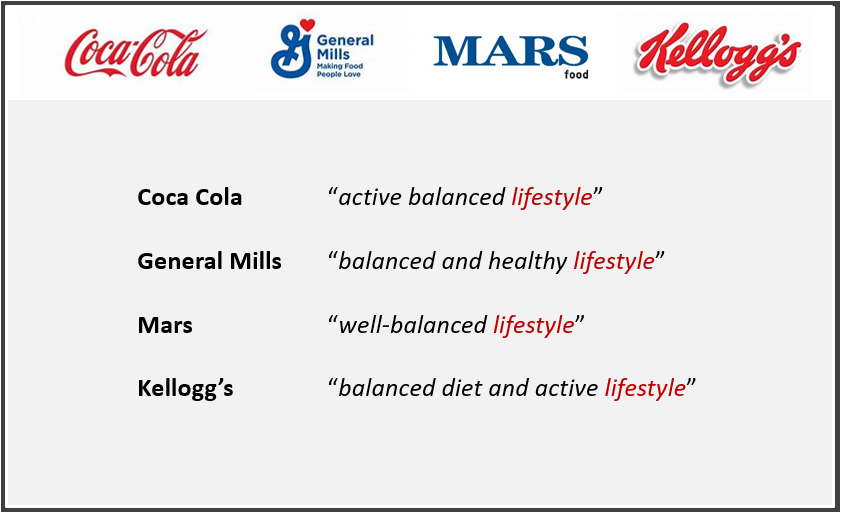
The Corporate Food Industry has been health-washing the 'Exercise is Medicine™' and 'Lifestyle Medicine' mantra to allow discretionary foods and sugary drinks to be part of an active and balanced lifestyle, placing the blame for poor health outcomes on an energy imbalance - too many ‘Calories In’ and not enough exercise for ‘Calories Out’.
Exercise is Medicine™
DR Robert Sallis was President of the American College of Sports Medicine when he founded Exercise is Medicine™ in 2007/2008 with the Coca-Cola Company as the first founding corporate partner of "a global partnership dedicated to encouraging doctors and health care providers to prescribe exercise as medical treatment." It is noted that the Coca-Cola Company provides grant funding, foundational support and promotional help to the Exercise is Medicine initiative, which now serves 34 countries world-wide.
According to journalist Ruby Prosser Scully there were "calls in 2016 for Coca-Cola to reveal which Australian groups and individuals it has funded, after its US arm responded to revelations in The New York Times, admitting it had given US$96.8 million to “health and wellbeing partnerships” and another US$21 million to research in the US.
When EIM was launched in the US by the American College of Sports Medicine, its vice-president, Dr Steven Blair, controversially claimed that there is “virtually no compelling evidence” that fast food and sugary drinks were to blame for a growing obesity epidemic.
"The exercise scientist was later revealed to have received almost $5 million (Australian) from Coca-Cola since 2008.
"Dr Blair was on the advisory board that set up the US arm of EIM, and presented his research at the launch of the Australian offshoot in 2010, when he claimed low cardio-respiratory fitness was responsible for more deaths than obesity, smoking and diabetes combined."
The list of Australian scientists include Andrew Hills, currently Professor of Sports and Exercise Science in the School of Health Sciences at the University of Tasmania, where Exercise is Medicine™ is being promoted for the management of Diabetes! Makes me wonder if this was another reason Gary's anti-sugary drinks and junk food in hospitals message was being 'Silenced'?
This is a great article on “Exercise is Medicine” by Russ Greene at Crossfit, questioning; The Coca-Cola / ACSM “Exercise Is Medicine” Scheme and its influence on Licensure and Regulation.
Lifestyle Medicine
'Lifestyle Medicine' on the other hand, is based on the Ideology of the Seventh-day Adventist Church including the 1863 Health Reform visions of their Prophetess and the subsequent Church doctrine around the (vegan) Garden of Eden diet for Salvation.
It is important to clarify right at the beginning of this article that the 19th Century Adventist 'anti-meat' message was never about saving animals from harm, nor was it about climate change. Meat was considered a toxic stimulant that corrupted moral values and led not only men, but women and children to the act of 'Self-Vice'. Meat was considered a stimulant equally, if not more harmful, than alcohol and tobacco ... but more on that later.
Respect and individual choice

I want to assure you before I begin that I respect each and every individuals' belief and their right to choice.
Discovering Religious Ideology and the Corporate Church’s influence on our dietary and health guidelines was completely unexpected, as was the pro-cereal/grain and anti-meat Rule-Books which both Gary and Tim Noakes appear to have come up against.
I am not opposed to those who choose to be vegetarian or vegan for Cultural reasons, Health concerns, Ethical beliefs nor for Religious ideology.
My concern is that choice is being taken away from you and I... by those creating, and protecting, the Rule-Books. Taken away from people who choose to follow Low Carbohydrate Healthy Fat principles that includes meat in their diet.
Moving forward, our guidelines need to be based on science, not non-science, they need to be flexible, pro-health and respectful of choice. Vested Interests, financial and/or ideological are a potential bias and must be declared by anyone involved in writing our dietary and health guidelines.
Understanding the role of Vested Interests and Ideology - not only in developing resources and educational materials for health professionals and allied health practitioners, but the latest collaboration between 'Exercise is Medicine™' and 'Lifestyle Medicine' to develop a world-wide medical curriculum is concerning. Especially when you consider the statement below by the Australasian Society of Lifestyle Medicine.

Until I started questioning 'Why' Gary was reported to the Medical Board of Tasmania by a dietitian in 2014, and then subjected to a 2 1/2 year star-chamber investigation for recommending his patients reduce sugar and processed carbohydrates to improve health outcomes, we had NO idea that the nutrition guidelines were becoming vegetarian, if not vegan, and that Gary was in trouble for advocating animal proteins and fats ... ie; red meat!
Ever since I wrote Have Aussie GP's become Medical Evangelists for the Seventh-day Adventist Church last year, I have meant to follow up with another article. I believe the talk I gave last week in Spain has become just that.
You may be aware of my research into the influence of the Seventh-day Adventist Church on our nutrition guidelines, acknowledged in August by authors of the review paper The Global Influence of the Seventh-day Adventist Church on Diet so I will write this article 'backwards' in relation to the talk I gave last week. Of course, when I presented it at #LCU18 there was a logical progression delving back into the pages of history before bringing the discussion forward again.
If you do not know the Adventist history, and perhaps even if you do, I recommend you make a cup of tea/coffee and settle in for a long read as I explain how Religious Ideology created the processed cereal and soy industry's and the Temperance Movement created the perfect environment for the sugar industry to become the solution to alcohol.
I concluded the presentation by highlighting the current situation and I think it is probably best to start there for this article.
What is the LMEd Collaborative and why start here?
I am starting with the LMEd Collaborative - Lifestyle Medicine Education Collaborative because it is the current intersection of 'Exercise is Medicine™' and 'Lifestyle Medicine' with major implications on the future of our healthcare.
While I wholeheartedly agree with the basic premise of the Lifestyle Medicine movement and the concept of good nutrition and exercise for the best health outcomes, I am concerned that these two entities are going to influence medical education and in turn, our future dietary and health guidelines with their bias. The risk is deflecting concerns away from the harms of sugary drinks and processed food/cereals/soy and grains, while 'silencing' those who speak out on the benefits of Low Carbohydrate Healthy Fats principles... through licensure laws, and threat of regulation if these guidelines become Strict Rule-Books, as Gary has experienced.
The LMEd Collaborative was co-founded by Dr Edward (Eddie) Phillips, Harvard Medical School’s Institute of Lifestyle Medicine, and Dr Jennifer Trilk University of South Carolina School of Medicine, Greenville, in 2013. Both are on the Advisory Board of Exercise is Medicine™ and have been heavily involved in incorporating Exercise is Medicine™, and now Lifestyle Medicine, into medical school curriculum.
The goal is for the Global Alliance of Lifestyle Medicine to take this 'move more ... eat less meat' medical curriculum world-wide.
Dr Edward Phillips is a Fellow of the American College of Sports Medicine (ASCM) serving on the executive council that developed, and leads, the Exercise is Medicine™ global initiative. He also co-authored the ACSM’s Exercise is Medicine™, The Clinician’s Guide to the Exercise Prescription (Lippincott, 2009) and is chair of the Exercise is Medicine Education Committee.
Dr Edward Phillips serves on the Advisory Board of the American College of Lifestyle Medicine with Dr Steven Blair, who also joins him on the Advisory Board of Exercise is Medicine™. Dr Steven Blair is past Vice President of the now defunct Global Energy Balance Network funded by Coca-Cola.
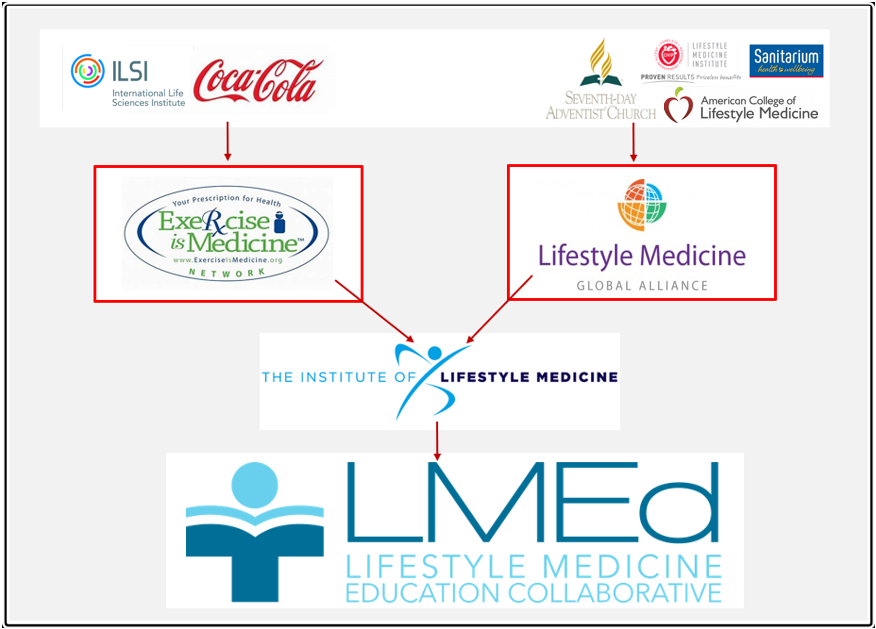
The Lifestyle Medicine Education Collaborative has received significant funding from the Ardmore Institute of Health, a philanthropic Foundation dedicated to supporting the Health Message of the Seventh-day Adventist Church. (www.fullplateliving.org).
The LMEd Collaborative is supported by the American College of Sports Medicine, the American College of Preventive Medicine and the American College of Lifestyle Medicine, founded by Adventist Dr John Kelly, in 2004.
Most key people within the American College of Lifestyle Medicine are Seventh-day Adventists and/or tied to Exercise is Medicine, or food industries either owned by the Church or closely aligned with the Adventist vegan 'Plant-based' message, since its inception. This includes Board Members, exam writers, certification advisers, past Presidents, President and the current President-Elect, Elder Dexter Shurney.
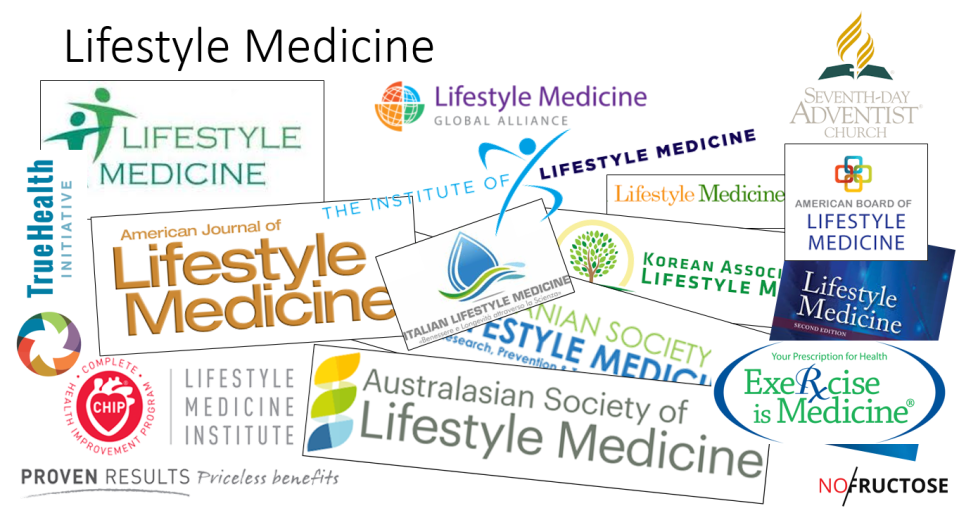
It appears that the American College of Lifestyle Medicine (ACLM), the original Australian Lifestyle Medicine Association (ALMA) and the original European Society of Lifestyle Medicine (ESLM) were the three pillars of the Seventh-day Adventist Church 'Global Lifestyle Medicine Alliance' now extending to every continent on the globe. GLMA was renamed the Lifestyle Medicine Global Alliance LMGA in 2016 shortly after the Global Energy Balance Network (GEBN), founded and funded by Coca-Cola, was dismantled.
The new Lifestyle Medicine Associations don't necessarily have to be aligned or associated with the Church (though many have key people in them that are) but all Associations appear to be encouraged to promote the Garden of Eden 'Plant-based' vegan diet and the 8 Laws of Health as Prophesied ... Nutrition * Exercise * Water * Sunshine * Temperance * Rest * Air * and Trust (in God).
All Lifestyle Medicine Society's/Associations offer Core Competencies developed by Seventh-day Adventists
Medical Evangelism is acknowledged as the Right Arm of the Seventh-day Adventist Church ... Has the Lifestyle Medicine movement become the entering wedge?

Back to the beginning of my talk in Mallorca, Low Carb Universe 2018
It has honestly been fascinating to discover that our pro-cereal/grain and anti-red meat dietary guidelines are simply a legacy of the Temperance Movement. Just like the saying 'Breakfast is the most important meal of the day'!
Interestingly, the legacies of the Temperance Movement - firstly from the Temperance Health Reformers of the 19th Century (inventors of breakfast cereal and the promoters of the Plant-based 'vegan' diet) and secondly from the Prohibitionists of the 20th Century (sugary soda drinks) have evolved further over the course of the last eighty years. Despite completely different trajectories, these two legacies have somehow woven together until they have become so intrinsically entangled, it’s hard to imagine them separate anymore.
It appears that the legacy of the Temperance Movement has become; 'Lifestyle Medicine' (with the backing of the Adventist Church) and 'Exercise is Medicine' (with the backing of Coca-Cola).
Introduction to my presentation at the Low Carb Universe, Mallorca
After gathering 4 1/2 years of research together I was honoured to be able to present my work over two sessions at #LCU18. I will attempt to summarise my presentation even further for this article, but it is a huge topic and the information I have discovered has massive implications not only for our health, but also our health choices.
My research is acknowledged in an Adventist Review Paper.
Interestingly, in August this year a review paper titled 'The Global Influence of the Seventh-day Adventist Church on Diet’ was published in the journal Religion. All authors acknowledged they were Adventists working at Loma Linda University which is owned by the Seventh-day Adventist Church.
Their paper was an historical perspective on the ideology of the Seventh-day Adventist Church and their subsequent influence on nutrition 'science' and dietary guidelines, world-wide. Not only does it summarise years of my own research but the authors acknowledge my work in referencing journalist Marika Sboros and the article she wrote on Gary’s talk at the Crossfit Games last year - which was the first time we had spoken about my research, publicly.
Declaration of interest

My declaration of interest is that #isupportgary and have since I was 16.
I trained as a nurse after leaving school, became a wife and mother of 3, sidestepping into professional photography for 16 years before coming back full circle to health advocacy.
Gary and I co-founded a dietetic/diabetes clinic in 2014, investing heavily in our community’s health before giving Nutrition for Life to the team 2 years ago.
I took over Gary’s No Fructose Facebook Page in 2015 to keep him safe and will continue to support our Low Carb community through that platform.
Gary is investigated for advising people to reduce sugar and processed food...
Gary began raising issues of Quality Assurance and Patient Safety back in 2011 as the tsunami of Type 2 diabetes and resulting complications truly started to overwhelm the public health system in Tasmania. He came to understand the impact of sugar and junk food on our health and he began questioning the hospital’s food menu and the low fat high carb dietary guidelines - especially for people with diabetes..

After being vexatiously reported to the Australian Health Practitioner Regulation Agency (AHPRA) - by a dietitian at his hospital in 2014, Gary was subjected to a 2 ½ year star chamber investigation by the AHPRA medical board of Tasmania - not dissimilar to Prof Tim Noakes’ experience with the HPCSA in South Africa, except that Gary’s investigation was carried out behind closed doors.
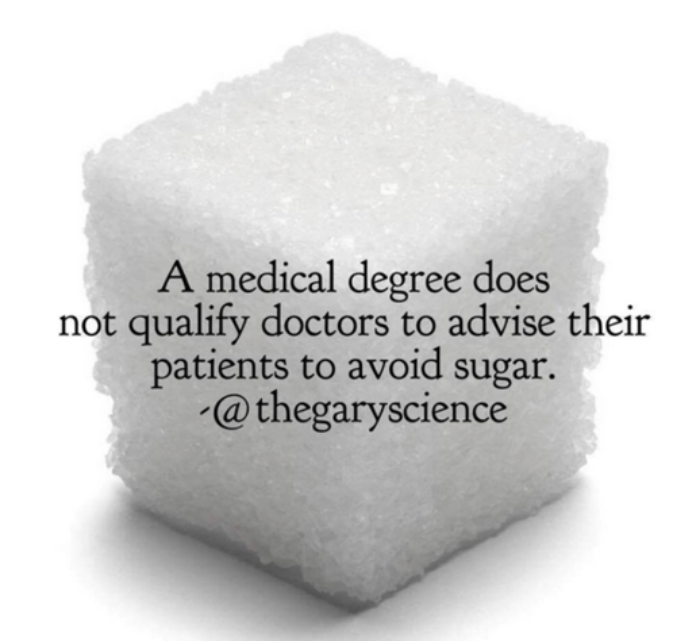
Last year I launched the website isupportgary.com to create a platform to share my research and to continue to publicly question why my husband, an Orthopaedic Surgeon in Tasmania, was officially ‘Silenced’ by the medical board in 2016.
Silenced even … from recommending his patients reduce sugar to improve their health outcomes!
Exonerated at last!

While we have finally been able to celebrate the retraction of all charges and restrictions on Gary, the journey to exoneration has been a long and costly one.
After 4 ½ years, Gary has had the unsubstantiated, vexatious ruling withdrawn AND he has received an unprecedented written apology from AHPRA. Not only is Gary now free to talk about the health benefits of LCHF, but the determination clearly implies that there is no harm going forward for any other health professional in Australia to recommend LCHF, too!
The Rule-Books state Low Carb is still a FAD diet
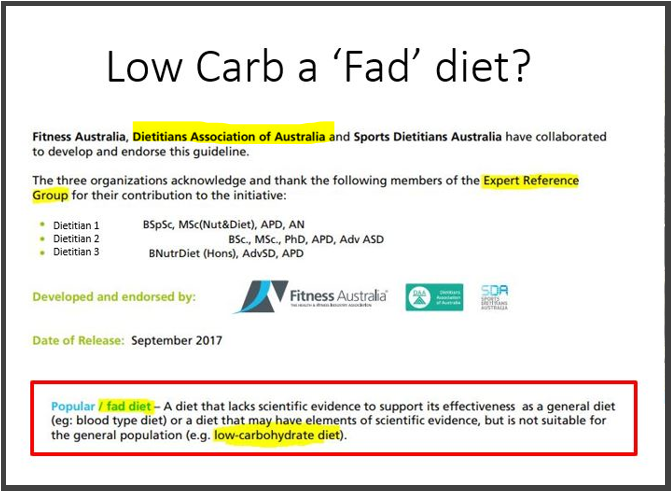
But, if that’s the case - why are we still facing so many obstacles? How can we raise awareness of the health benefits of LCHF principles when the self proclaimed peak body of nutrition – the Dietitian’s Association of Australia - continue to call Low Carb a Fad diet?
Why am I speaking at a Low Carb conference?

I am not here to discuss the science with you. There are plenty of other presenters with much more knowledge about nutrition than I.
I am here to plant a seed of doubt in your mind...
I believe that ‘Nutrition Science’ has been infiltrated by Vested Interests and Ideology - and as such, brings into question the credibility of our current dietary and health guidelines.
Soon after Gary was reported in 2014 I took a deep dive into cyberspace and have spent the last 4 years chasing random leads around the world-wide web to try to find information that would help me clear Gary’s name. Interestingly, many of the answers I was looking for were buried in the pages of history.
The legacy of the Temperance Movement
It didn’t seem to matter which pathway I ventured down, I invariably came back to what I believe has become the legacy of the Temperance Movement of the 19th and 20th centuries.
… ‘Breakfast Cereal and Coca-Cola’.
Temperance Health Reformers
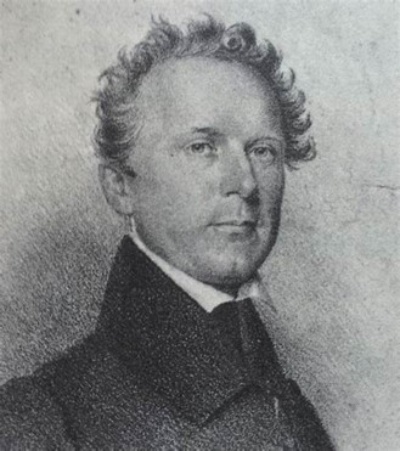
Itinerant preacher Sylvester Graham, and his fellow health reformers began advocating Temperance in the early 1800’s. Temperance from all stimulants which included alcohol, but not exclusively!
Temperance Health Reformers were concerned that Americans were plagued by disease because of immoral behaviour and over-stimulation. Emphasis was placed on a ‘vegetarian diet’, sexual restraint, and a balance between rest, exercise and cleanliness
Early Temperance Health Reformers were described as; 'Blending religion, science, philosophy and politics to establish a scientific rationale for vegetarianism.' Margaret Puskear-Pasweicz
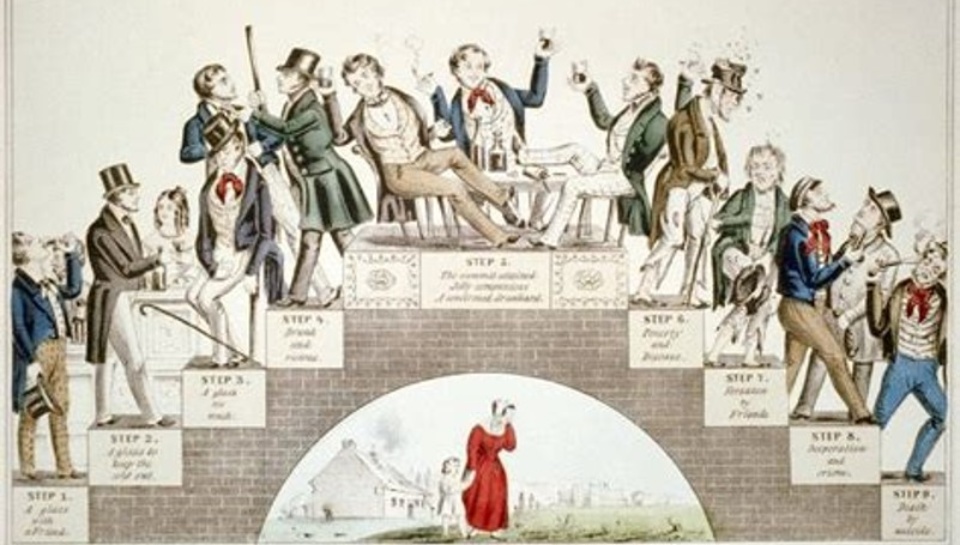
The Temperance Movement on the other hand, was largely set up to ‘Temperate’ the consumption of alcohol for social, moral and religious reasons. There was a necessity for laborers to be sober to operate heavy machinery, entire pay packets were being spent at the bar and on gambling, and there was growing concern about the violence associated with drunkenness leading to family abuse and neglect, with a distinct rise of alcohol related crime.
Over time, the two Temperance groups came closer and closer together - but neither lost sight of their true purpose and mission. By the 20th Century many of the leading Health Reformers also held key positions in the Temperance Movement with the focus broadening from prohibition - to suffrage, abolition of slavery and improved working conditions.
National Prohibition, via the 18th Amendment, came into effect in 1920 … and abolition of that same amendment occurred 13 years later.
Prohibition may well and truly have passed, but the legacy of the Temperance Movement lives on today with breakfast cereals and the Plant-based 'vegan' diet and sugary soda drinks, including Coca-Cola.
Origins of Eastern Vegetarianism

Just as a quick point of reference … when I refer to vegetarianism throughout this article I refer to the Western Origins of Vegetarianism.
The Eastern Origins of Vegetarianism have come from Buddhism, Hinduism and Taoism and other Eastern religions who have a deep respect for animals based on their central role in the food cycle and their environment.
Conversely, Western Vegetarianism has evolved from Temperance and Religious Ideology.
The Temperance Health Reform Diet was in fact Vegan … it's just that the term wasn’t coined until 1944.
In summary, my research has led me to believe the censorship around LCHF principles has never really been about the science.
Hopefully now, I have set the scene for my talk - I will take a quick look at the evolution of our ‘Plant-based’ dietary guidelines.
Evolution of the Plant-based dietary guidelines
Where did the meat go?

Let’s start at the start of my journey … when I was simply trying to understand why Gary was in trouble for talking about reducing sugar and Low Carb Healthy Fat principles. It wasn’t until I realised that the dietary guidelines had become a ‘Plant-Based’ Rule-Book that I asked … ‘where did the meat go’?
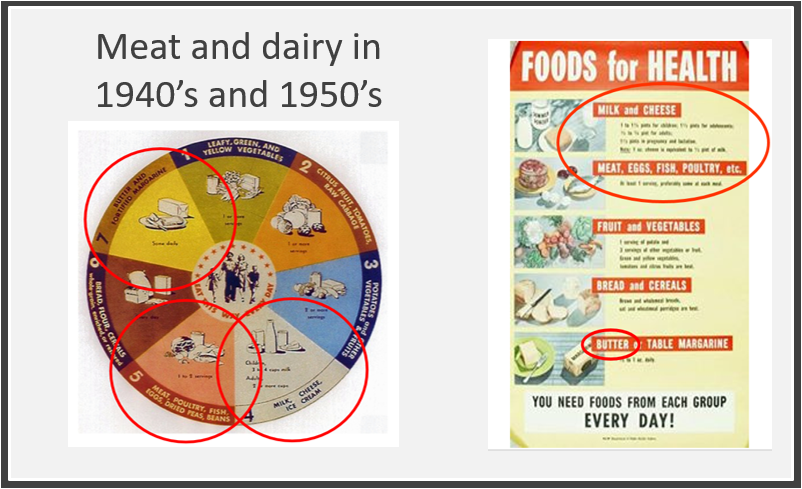
In the 1940’s nearly half the food guidelines were meat and dairy and even the 1950’s ‘Foods for Health’ chart shows dairy and meat at the top.

By 1979 meat had started drifting down the guide while bread and cereals moved up.
This change coincided with the McGovern report of 1977 demonising natural Saturated Fats thereby offering the processed food industry the perfect opportunity to create fake foods and add lots of sugar into ‘Low Fat’ products.
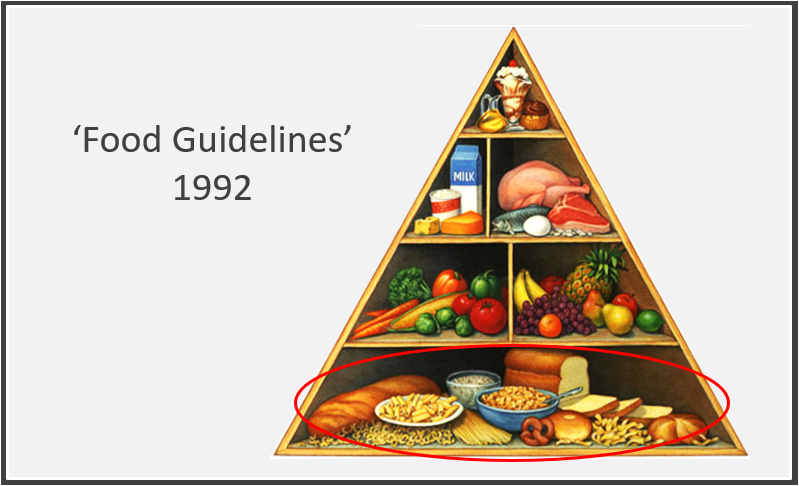
1992 gave us the Food Pyramid that Gary and I knew well and the one we took into our medical practices and used to raise our family.
This pyramid was heavily influenced by the American agricultural sector and the 1988 American Dietitians Association vegetarian review paper… but more on that later.
Just look at the explosion of cereal and grain products forming the base of the guidelines - with recommendations of 6 to 11 servings of processed carbohydrates per day!

Where are we at now?
Gary created this slide for his talk in America last year, pointing out that we need to send out a ‘search and rescue party’ to find the red meat and dairy in the 2013 Australian Guide to Healthy Eating.
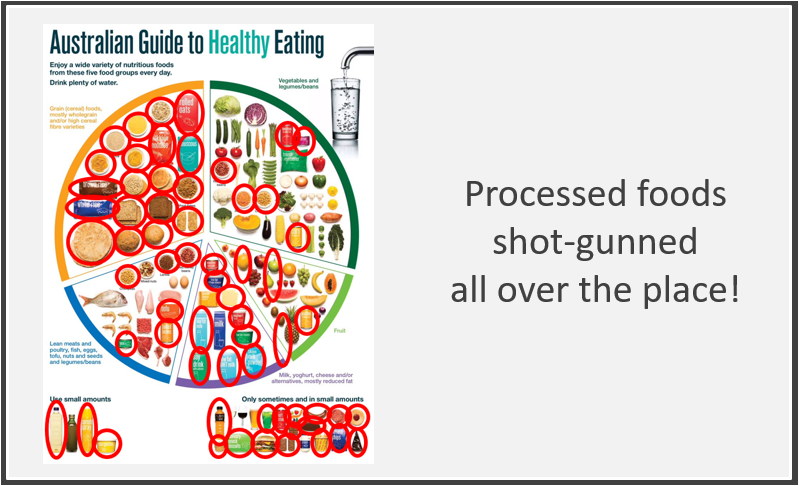
But no problems at all finding vegetarian and vegan friendly processed foods including cereals and grains, soy, fake meat, fake dairy and fake oils … shot-gunned all over the Australian guide to ‘healthy’ eating.

The US My Plate can’t even bring itself to mention the word meat … instead, it references ‘Protein’ to include, fake meats, legumes and soy products.
When did the current nutrition doctrine; which espouses cereals, grains and vegetable protein come to be accepted as the gospel truth … and more importantly, why?
Dr John Harvey Kellogg

Let me introduce you to one of the most influential vegetarians (vegans) in medical history.
…. I am sure most of you have heard of Dr John Harvey Kellogg, who in 1894 managed to invent the process to flake wheat with his younger brother William Keith, thus paving the way for the most famous breakfast cereal of all time … Kellogg’s corn flakes.
You may also be aware of the controversies around that invention in 1897? The brothers had a disagreement because William Keith Kellogg wanted to add sugar to their cornflakes recipe to make it more commercially appealing, but John Harvey fiercely opposed the idea.
William Kellogg insisted on using sugar, took the Kellogg’s name and created the breakfast cereal empire we know today. The brothers never spoke again.
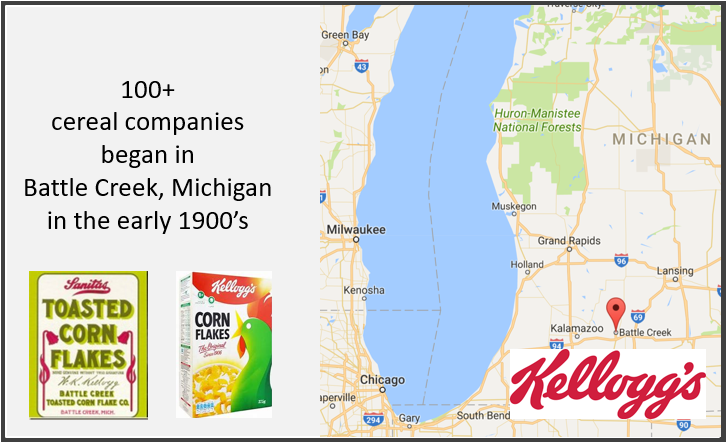
As a result of their cereal invention, Battle Creek Michigan became the birthplace of the Breakfast Cereal Industry. Most startups folded, but some of the more successful ones were bought by established manufacturers. Kellogg's just continued to grow!
But, cereal wasn’t the only thing Dr John Harvey Kellogg invented;
*1877 Granola
*1894 Wheat Flakes
*1897 Corn Flakes
Did you know that he also made and patented ... *Peanut Butter
And that he invented *nutmeat analogues as protein alternatives to meat and dairy, and a *cereal-based coffee substitute to serve both patients and guests at the Battle Creek Sanitarium?
John Harvey Kellogg was a huge advocate of soybeans, well documented from 1917 till 1943, presenting "Soybeans as Human Food" to the American Soybean Association in September, 1930.
*1927 Soy meal and special soy biscuits for diabetics containing 50-60% protein, 7-10% fat, and 1-3% starch
*1930 Soymilk
*1937 powdered soymilk and a Soy Acidophilus Cheese
Over his lifetime, John Harvey Kellogg held more than 30 patents for food products and processes as well as instruments and devices for exercise, diagnostic and therapeutic machines.
Why was John Harvey Kellogg so intent on inventing and producing vegetarian foods?
You may be surprised to learn that he too, was a Temperance Health Reformer and as such, his views on Temperance went beyond the moderation or abstinence of alcohol.
Like Sylvester Graham 50 years before, John Harvey Kellogg believed that all stimulants were harmful. Not only alcohol, but tobacco, caffeine, spices… and MEAT.
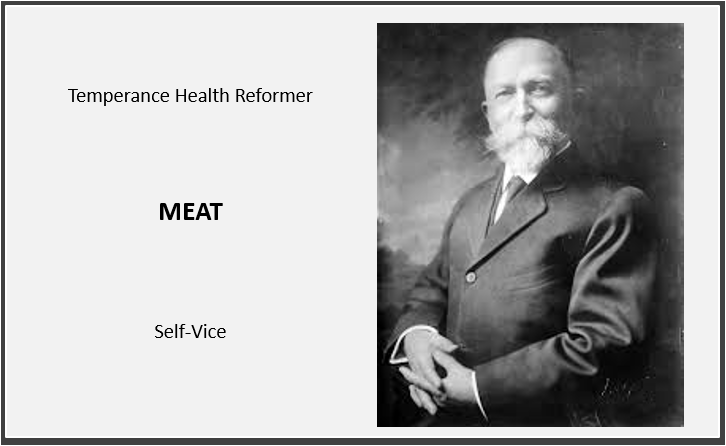
He believed ‘flesh eaters’ developed ‘animal propensities’ and ‘stirring of baser passions’ leading to the most heinous sin known to man at that time
… Self-Vice.
It may surprise you to learn that the invention of Corn Flakes was simply part of an Anti-Masturbation Crusade.
But, where did John Harvey Kellogg's Temperance Health Reform ideas stem from?
The Seventh-day Adventist Church and Prophetess Ellen G White

John Harvey Kellogg was a devout Seventh-day Adventist. His father had helped settle the fledgling Remnant Church into Battle Creek, Michigan in 1863, providing large sums of money to help set up their printing press. Literacy evangelism was used by the Church to promote the Seventh-day sabbath-keeping and the Adventist health reform mission under the guidance of the Spirit of Prophecy. This was the term that came to be applied to the visions and writings of Church co-founder Ellen G White, who was just 17 when she experienced the first of over 2000 visions and dreams from God.

The Health Reform vision given to her in Otsego, 1863 led to her pronouncement that the Garden of Eden diet of “fruits, nuts, vegetables and seeds, constitute the diet chosen for us by our Creator.”
Unlike itinerant preacher Sylvester Graham who advocated temperance and health reform to those who would listen, Ellen G White brought these prophecies into the Seventh-day Adventist Church doctrine.
She shared visions telling her that members of the church must consider their body as a Temple for God and as such, must not desecrate it with impure thoughts, actions or by the ingestion of any form of stimulant… hence, the need for temperance in all things.
Ellen G White’s belief that it was the duty of the church to “actively engage in public-health education to control desires and baser passions" set the Church apart from other major religious denominations.
The prevention and cure for masturbation included a vegan diet
John Harvey Kellogg was just 12 years old when he went to work for the ‘first family’ of the Adventist Church.
He was given the task of type setting Ellen G White’s first book … An Appeal to Mothers … which spoke only of the responsibility of mothers deterring their children from masturbation. Her written word was delivered through the powerful art of sermon, instilling guilt and fear into her readers.
Imagine being a 12-year-old and typesetting these words…
I have been shown that children who practice self-indulgence previous to puberty, or during the period of merging into manhood and womanhood, must pay the penalty of nature's violated laws …
The penalty of violating Nature’s Laws according to Ellen G White (in summary) “The results of self-abuse is seen in various diseases … headache, loss of memory and sight, great weakness in the back and loins, affections of the spine and the head often decays inwardly."
Such are just as surely self-murderers as though they pointed a pistol to their own breast and destroyed their life instantly
"The mind is often utterly ruined, and insanity takes place."
Dr John Harvey Kellogg and the Battle Creek Sanitarium
John Harvey Kellogg was a young boy when he was typesetting this text and he continued to typeset, edit, print and publish monthly journals for the church until he went to College at the age of 16.
For 4 formative years he was immersed in Adventist Health Reform messages including health and hygiene, temperance, vegetarianism, the use of natural remedies and the penalty of violating the Laws of Nature.
Is it any wonder that when he became a doctor John Harvey Kellogg tried everything to prevent intemperance and sinful masturbation. He invented bland cereals and prescribed vegetarian diets. He was known to perform circumcision on boys without anaesthetic and to use carbolic acid on the clitoris of girls. He advocated bandaging or tying children’s hands at night, covering their genitals with patented cages and instituted electrical shock therapy to help set young people on the path to salvation. It is said he had such an aversion to sex that he remained celibate for life, never consummating his own marriage …
Temperance Health Reform was his purpose in life …
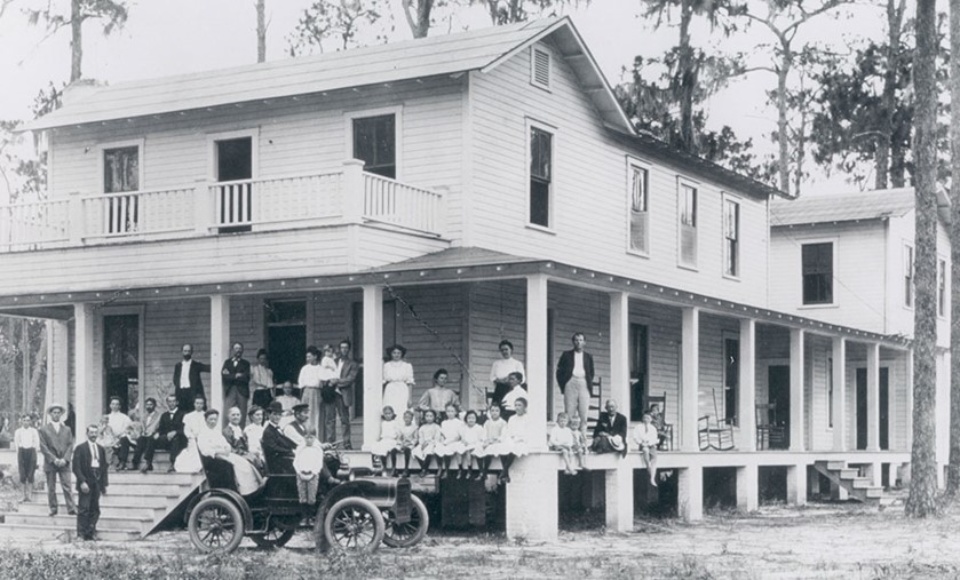
John Harvey Kellogg was 24 when he graduated from medicine and became Superintendent of the Adventist owned Western Health Reform Institute, founded 10 years earlier by Ellen and James White.
He changed the name to Battle Creek Sanitarium in 1877 and took the institute from a small hospice caring for 20 patients to a facility in 1908 capable of caring for 700 patients and guests, while still an Adventist owned institution.

At its peak, John Harvey Kellogg’s Battle Creek Sanitarium accommodated 1200 people with 700 staff to cater to their needs. There was nothing like it in the world … Industrialists, celebrity’s and politicians came from far and wide to attend lectures on vegetarian food preparation and come to understand the virtues of exercise, fresh air, sunlight and celibacy.
Ellen G White - Prophetess of the Seventh-day Adventist Church
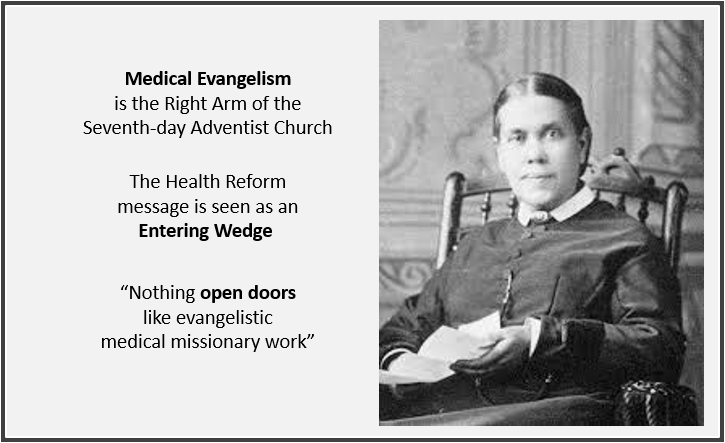
During her lifetime, Ellen G White wrote more than 5,000 periodical articles and 40 books. She is said to be the most translated woman writer in the entire history of literature, and the most translated American author of either gender!
In one of her early visions Ellen G White was told;-
*"Medical Evangelism" was to become the Right Arm of the Seventh-day Adventist Church.
*The Health Reform message would become the 'Entering Wedge' and
*“Nothing will open doors for the truth like evangelistic medical missionary work. This will find access to hearts and minds, and will be a means of converting many to the truth.” (Ms. 58, 1901, in Ev 513:1)
According to the Spirit of Prophecy “A religious life can be more successfully gained and maintained if meat is discarded, for this diet stimulates into intense activities lustful propensities, and enfeebles the moral and spiritual nature.“
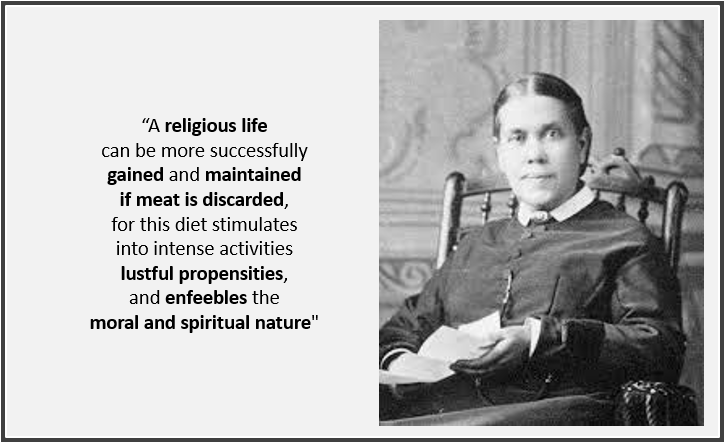
Some 2016 figures on the Adventist Church
2016 figures publicly available from The Adventist Church document that they own 171 hospitals/sanitariums world-wide, 48 in the US and 28 in Florida alone - with a further 329 clinics serving over 17 million outpatients.
Churches may also serve as venues for public health interventions by offering vegan cooking classes and the Complete Health Improvement Program (also known as CHIP). CHIP was developed by Loma Linda University graduate Hans Diehl 25 years ago but it is now owned by Sanitarium Health and Wellbeing company in Australia. The program is centred on the promotion of a whole-food, vegetarian/vegan eating pattern with daily physical activity.
The Church also influences the diet of non-members around the world through its ambitious organizational structure dedicated to education - the 2nd biggest educational system in the world second only to the Catholic Church.
The Seventh-day Adventist Church owns 20 food industries world-wide currently producing 2,475 products - ALL meat and dairy substitutes including breakfast cereals, and soy products with sales estimated to be $684,312,375 US.
And, to give you some idea of the reach of the Adventist Church message via their Literacy Evangelism using the internet, there were 6,135,276,009 podcast downloads in 2016 alone!
The 20th Century Temperance Movement
Ellen G White became a key figure in the global Temperance Movement of the 20th Century as did John Harvey Kellogg’s wife, Ella. Both were members of the Women’s Christian Temperance Union pushing for prohibition and social change.
I have already explained how Temperance Health Reformers created an environment leading to the creation of the breakfast cereal industry…
Now let me show you how The Temperance Movement created the perfect environment for the sugar industry to become part of the solution.
Aren’t I fun to have around??
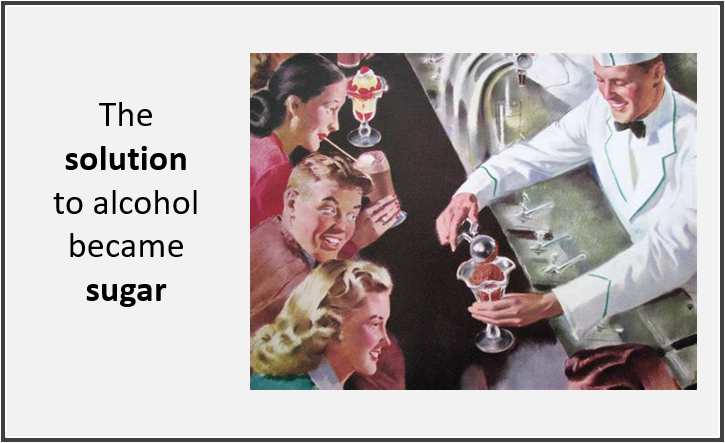
To be fair light alcohol ('thin beer') was considered a much safer drink than the muddied drinking water in America and the water borne, cholera ridden waters of Europe at that time.
Incredibly there were over 1,300 Breweries in America in 1916, but only a handful left by the end of prohibition in 1933.
The businesses that survived embraced non-alcoholic drinks like cereal beer, ginger and other root beers, and non-alcoholic malt beverages.
Soda Fountains - the New American Bar

Soda Fountains began flourishing in pharmacies and in ice-cream parlours which became known as the New American Bar.
They were declared ‘an ally of temperance’ because respectable people; family’s, friends and neighbours could gather together to socialize without alcohol.
Some communities remained concerned that soda water was being added to alcoholic drinks and wanted soda fountains banned on Sundays. … but along came a treat that could be eaten on the Sabbath … the Ice-cream Sundae.
Quakers and Chocolate

Another religious group promoting Temperance at that time were Quakers. To avoid caffeine and alcohol - which they believed were the two causes of great moral evil - they came up with the idea of making and marketing chocolate! Quakers Fry, Cadbury and Rowntree believed that chocolate could not only make people sober, but would help them be healthy and productive as well.
And they didn’t just make chocolates.
Since heating water helped kill the water borne bacteria tea and coffee became popular ‘safe’ drinks but they were expensive and not aligned with Quaker beliefs… hot cocoa, on the other hand, became the perfect health and cost solution enjoyed by people of all ages and social classes.
Unfortunately, multinational giants have since taken over the Quaker confectionery companies. Nestlé took over Rowntree's in the 1980s. Cadbury took over Fry's only to be bought up by Mondelez International (then Kraft Foods) in 2010. Jon Martin makes the observation at the end of his article (linked above) that “Quaker ethics are now historical footnotes for these vast corporations.”
Coca-Cola
In 1886 Cocaine made its entrance into soda fountains via Coca-Cola, first formulated by chemist John Pembleton. For 18 years the soft drink contained 9 milligrams of cocaine per 7 ounce glass and a large dose of caffeine in each serve. Despite these two powerful ingredients Coca-Cola was considered an acceptable alternative to alcohol during the lead up to Prohibition.

In 1903 the New York Tribune ran an expose and called for legal action against Coca-Cola “to stop producing their cocaine laced drink because it contributed to crimes committed by crazed people!” It was removed after a public outcry, but nothing was done at that time about the caffeine or high sugar content.
Astoundingly, Coca Cola sold 9,000 gallons of its flavoured syrup in 1890 which became ONE million gallons by 1904.
By 2011 Coca-cola products were served at the rate 1.7 billion times a day. That’s nearly 30% of the entire world's population drinking soft drinks produced by Coca-Cola each and every day!

Is this the legacy of the Temperance Movement? …
Have we, in an attempt to temperate our consumption of alcohol and meat allowed multinationals to create our food supply? - Kelloggs, Coca-Cola, Unilever and Nestle...?
How one man's silencing shone a light on the Temperance Movement
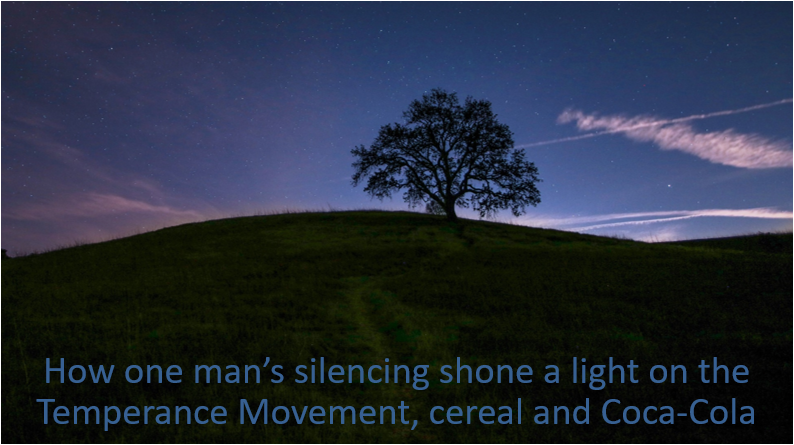
Alright - I can guess what you are thinking - how on earth did I manage to connect the Temperance Movement, breakfast cereal and Coca-Cola to Gary’s case?
Let me explain … I couldn’t work out why the highest profile Nutrition Expert in the South East Asia Pacific Region, and one of the most recognised nutrition experts in the world, became involved in Gary’s AHPRA investigation!
While I think my husband is incredible and making a huge difference to many lives, in reality he is an Orthopaedic Surgeon working in Launceston Tasmania, with a catchment area of 120,000 people. We live in the small city of Launceston, Tasmania … tucked away at the bottom of the world.
At the time Gary was reported he had about 5,000 followers on Facebook, so it wasn’t as if many people were hearing his message …
When questioned, even the Medical Board could not tell us where this expert witness appeared from. He simply appeared!
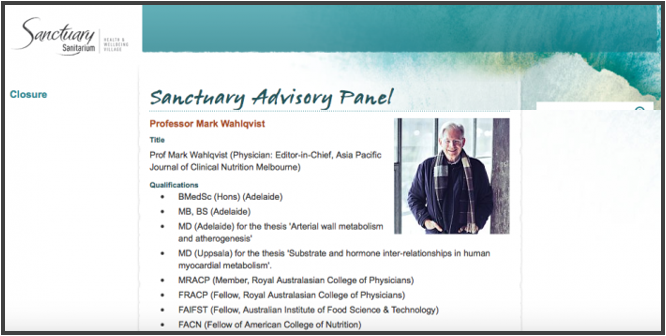
Interestingly, Professor Mark Wahlqvist was associated with Australia’s Sanitarium Health & Wellbeing company, and he continues to have a close relationship with the Dietitians Association of Australia, who also happen to be entrenched with the processed food industry.
We bought a copy of Professor Mark Wahlqvist's Food & Nutrition textbook which is used by Nutrition Students at the University of Tasmania and also by the Seventh-day Adventist Church for their Health Ministry Training Course (22144VIC Certificate IV in Presenting Community Health Education Programs) encouraging vegetarian/vegan diets.
None of this was declared as a conflict of interest during Gary’s investigation and when we supplied proof it was dismissed …
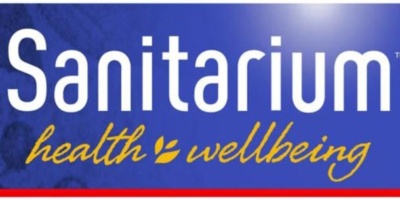
The issue in Australia, is that the processed breakfast cereal company, Sanitarium Health and Wellbeing Company (which is wholly-owned by the Adventist church and as such pays no tax) sponsors and partners with these Associations - the Dietitians Association of Australia, the Heart Foundation and Diabetes Australia.
Sanitarium is part of the Australian Breakfast Cereal Manufacturing Forum trading as #cereal4brekkie and involved in documents I uncovered outlining the Dietitians Association of Australia’s agreement, and the expectations of their members as part of their $23,000 corporate partnership to Influence, Protect and Actively Defend not only cereal and grains messaging, but sugars messaging, too!

Documents that specifically name my husband as targeted for active defense raised my suspicions about the breakfast cereal industry utilising tobacco industry tactics to deflect and stifle scientific debate.
While it began to become clear who wanted Gary silenced …
We never imagined for a minute that it was for recommending Healthy Saturated Fats and including meat in the diet.
When you challenge a belief or an ideology, the people you question defend it religiously. Generational Education becomes an issue, because once beliefs and ideology shape education and it is taught ‘over and over’ … it becomes the gospel truth.
Ellen G White in Australia
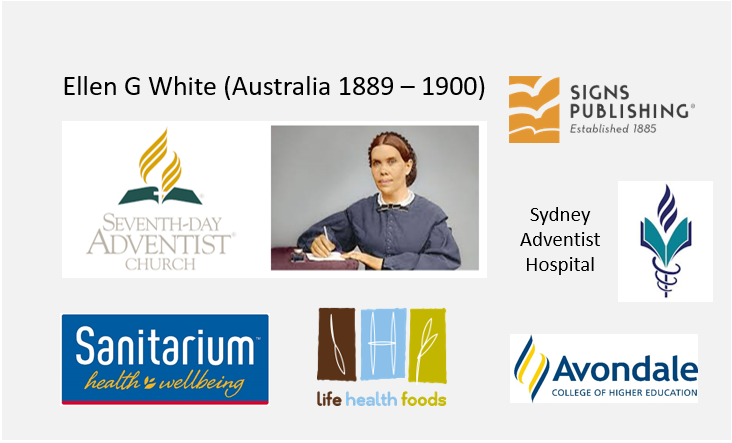
16 years after a Vision where an Angel told Ellen G White that she saw a publishing house in Australia, Ellen arrived in 1889. She was accompanied by her son Elder William White, Merritt Kellogg (the elder stepbrother of John Harvey Kellogg) and Edward Halsey, a baker from Kellogg's Battle Creek Sanitarium.
Over the next 10 years their plans were to establish the Seventh-day Adventist Church, the Signs Publishing Company, the Sydney Adventist Hospital, primary schools, Avondale College, AND they wanted to reproduce the Kellogg’s cereal model, but this time have the Church own it, and the profits.
The Sanitarium Health and Wellbeing Company remains one of the largest food industries in Australia and New Zealand producing over 160 products including breakfast cereals, liquid breakfasts, peanut butters, soy and almond milks, and frozen desserts.
The brands Bean Supreme, Naked Locals and Alternative Meat Co. come under Sanitarium's Life Health Foods Australia’s range.
“The health food business... is to supply the people with food which will take the place of flesh meat, and also milk and butter...”
While in Australia Ellen wrote the following statement taken from her book Christian Temperance and Bible Hygiene confirming that “ The health food business... is to supply the people with food which will take the place of flesh meat, and also milk and butter....”
4 very influential people on nutrition in the Adventist Church
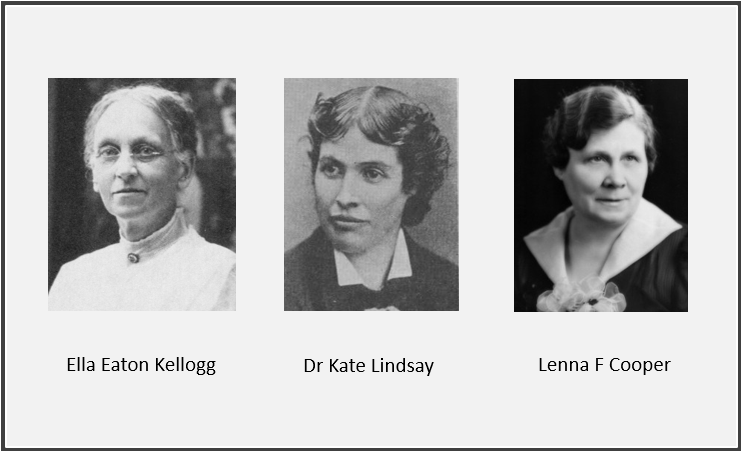
I digress back in time for a moment … these 3 women were early proponents of the Adventist Health Reform message at the Battle Creek Sanitarium, integral to supporting Medical Evangelism and offering an entering wedge to the church through the Garden of Eden diet.
Firstly Ella Eaton Kellogg, wife of Dr John Harvey Kellogg, supervised the domestic sciences "school of cookery“ and taught classes in food preparation for homemakers, nursing students and for home economics students … the forerunner to dietetics.
Dr Kate Lindsay started working at the Battle Creek Sanitarium the same year as John Harvey Kellogg. She developed the first Adventist school of nursing in 1883 and grew it to a nationally accredited course over time, publishing the first of her nursing textbooks in 1884. She was a devout Adventist, and spent 4 years as a medical missionary in Africa, living and teaching temperance and vegetarian health principles her entire life.
Lenna Frances Cooper was a dietitian of such influence that the Academy of Nutrition and Dietetics honour her memory with the Lenna Frances Cooper Memorial Lecture Award each year.
After graduating from Kate Lindsay’s nursing training in 1901, Lenna became a protégé of Dr. John Harvey Kellogg and his wife, Ella, studying nutrition and becoming a leading advocate of health care through diet.

Her book The New Cookery was published in 1913, featuring a 'then-novel concept of nutritionally balanced, wholesomely prepared, attractive and palatable recipes for good health.' She became the first director and dean of the school of home economics at the Battle Creek Sanitarium, with more than 500 dietitians graduating during her tenure.
Lenna Cooper co-founded the American Dietetic Association in 1917, and became the first Vice President that year and later the 14th President in 1938. She pioneered the dietetic profession as a charter member of the American Home Economics Association, became the first president of the Michigan Dietetic Association and the first U.S. Army dietitian. She served on the staff of the U.S. Surgeon General and created the department of dietetics at the National Institutes of Health.
But, it was her role as senior author of Nutrition in Health and Disease, a text that was used for 30 years in dietetic and nursing programs around the world, that made Lenna Cooper famous in dietetics world-wide.
Just like Dr Kellogg, all 3 women wrote highly influential books - cookbooks and/or medical, dietetic and nursing textbooks that were used not only for Adventist education, but texts that crossed over into mainstream public health education for over 30 years. Each of these women had deep purpose, driven by religious ideology to promote the Garden of Eden diet, believing that fruit, nuts, vegetables and seeds were the God Given diet for man …
Dr Harry W Miller - the 'China Doctor'
This talk wouldn’t be complete without mentioning Dr Harry W Miller, an amazing Adventist medical missionary who spent nearly 70 years in China - as a medical doctor and surgeon, a publisher of literacy evangelism and as a food scientist …
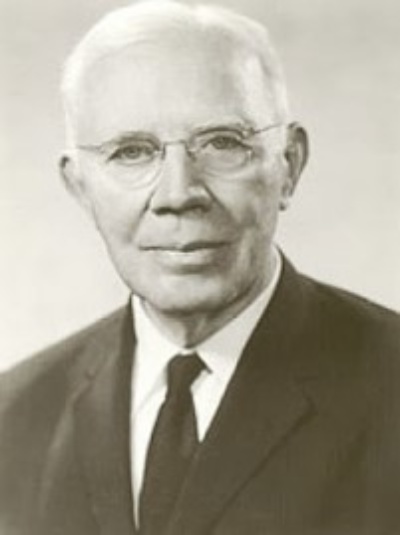
He is the 'founder of the modern soy milk renaissance in Asia' - developing and manufacturing soy milk and soy products to serve to patients, staff and the Adventist community. Dr Harry Miller also invented infant soymilk in the 1930’s and took the formula back to America.
Finally in 1951, after a decade of attempting to convince the AMA of the superior health benefits of Soyalac infant formula over cows milk, it was accepted as a hypoallergenic infant food by the AMA's Council on Foods and began to be prescribed by physicians.
Over his lifetime Harry Miller established 19 Sanitariums, mostly in Asia and in each he provided training for nurses - with churches, publishing houses, schools and a soy plant - built to support each community that grew from the entering wedge to the Church - Medical Evangelism
When Dr Harry Miller founded the The New Nutrition Research Laboratory in 1953, under the umbrella of the International Nutrition Foundation he stated "Science will be used to prove not disprove divine inspiration. We can always be sure that thorough scientific research will support and not contradict Inspiration."
Science will be used to prove not disprove divine inspiration. We can always be sure that thorough scientific research will support and not contradict Inspiration. To research workers it is of the greatest encouragement to embark upon problems that Inspiration has foretold would be accomplished. The assurance that the Lord will give wisdom to those who study to find suitable substitutes for meat, eggs, and milk in the diet is a great stimulus. The Lord always has something better than that which He would have us discard.
Remember Dr Harry Miller convinced the AMA of the superior health benefits of Soyalac infant formula over cows milk back in 1951? In context this statement makes sense why Dr Miller was so intent on creating the soy industry... "The assurance that the Lord will give wisdom to those who study to find suitable substitutes for meat, eggs, and milk in the diet is a great stimulus."
By 1958 his labs had developed new and improved soy milks, soy cream, improved acidophilus soy milk and ice cream, cottage cheese, a soy-cream cheese spread, cholesterol-free cheese, and a nondairy margarine.
Dr Mervyn Hardinge
One of the technical experts employed at Dr Harry Miller’s Research Laboratory was a Seventh-day Adventist named Dr Mervyn Hardinge. He set about investigating the health status of Adventist vegetarians in the 1950's for his doctoral dissertation at the Harvard School of Public Health under the supervision of Professor Frederick Stare.

When his findings were published in the Journal of the American Dietetic Association, they drew national attention.
Mervyn Hardinge established the School of Public Health at Loma Linda University in 1967 where he worked as Dean for 11 years, creating the first official course of study on medical ministry and evangelism.
He later became the director of the Health Department of the Seventh-day Adventist Church.
Adventist influence in the American Dietetic Association and the start of the 'Plant-based' dietary guidelines.
Lydia Sonnenberg and Ulma Doyle Register (known as U.D) were the dietitians acknowledged as instrumental in getting vegetarianism accepted back into the American Dietetics Association.

U.D Register became a Seventh-day Adventist in 1938 and a food chemist for Madison Foods in 1941, an Adventist company founded by Ellen G. White, creating soy-based products.
At the 1969 White House Conference on Food, Nutrition, and Health. Register was invited to speak about vegetarian diets and then again at the 55th annual meeting of the American Dietetic Association in 1972. Later, at the request of the ADA, he co-authored a continuing education manual for dietitians on vegetarian diets.
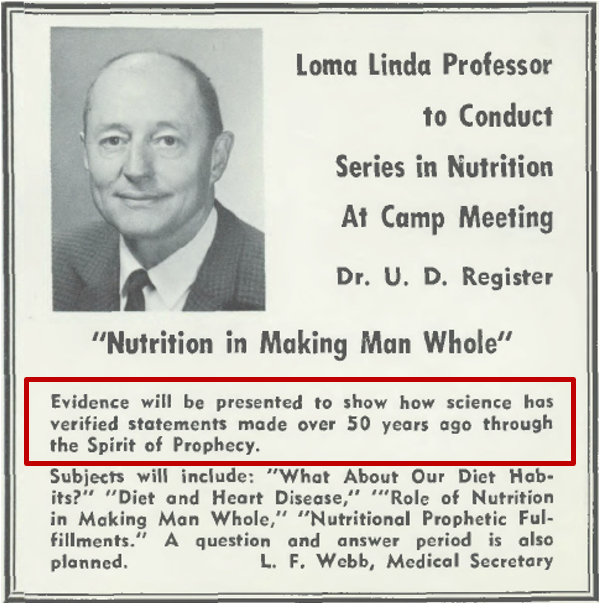
U. D. Register was another technical advisor at Harry Miller’s Research Laboratory who also emphasized the close relationship between the counsel found in the Spirit of Prophecy writings and findings of modern-day science to his students at the College of Medical Evangelism (later renamed Loma Linda University) stating "Evidence will be presented here to show how science verified statements made over 50 years ago through the spirit of prophecy."
Kathleen Zolber, Adventist, became President of the American Dietetics Association in 1981

Kathleen Zolber, chairman of the Department of Dietetics in the School of Allied Health Professions at Loma Linda was elected president of the American Dietetic Association in September, 1981. At the time the Association represented 42,000 professional dietitians and nutritionists and within a year of her Presidency the first vegetarian position paper was being written.
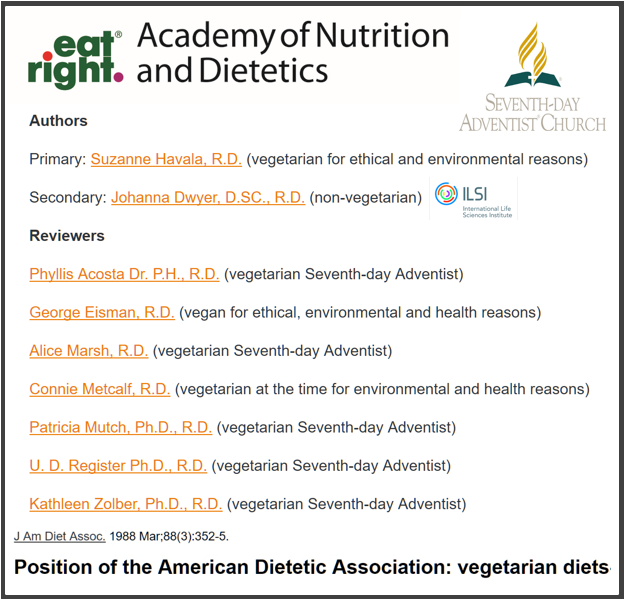
Vegetarianism was fully accepted by the American Dietetic Association (now known as the Academy of Nutrition and Dietetics) in 1988.
Of the nine reviewers of the Position of the American Dietetic Association on Vegetarian Diets, every single one had a Vested Interest in a positive outcome. 8 of the 9 reviewers were vegetarian/vegan, while the other person was tied to the processed food industry and ILSI.
Five reviewers were from the Seventh Day Adventist Church including Kathleen Zolber, as a past president of the ADA.
Dietitians Association of Australia ... Vegan vs Low Carb. Which is the FAD diet?
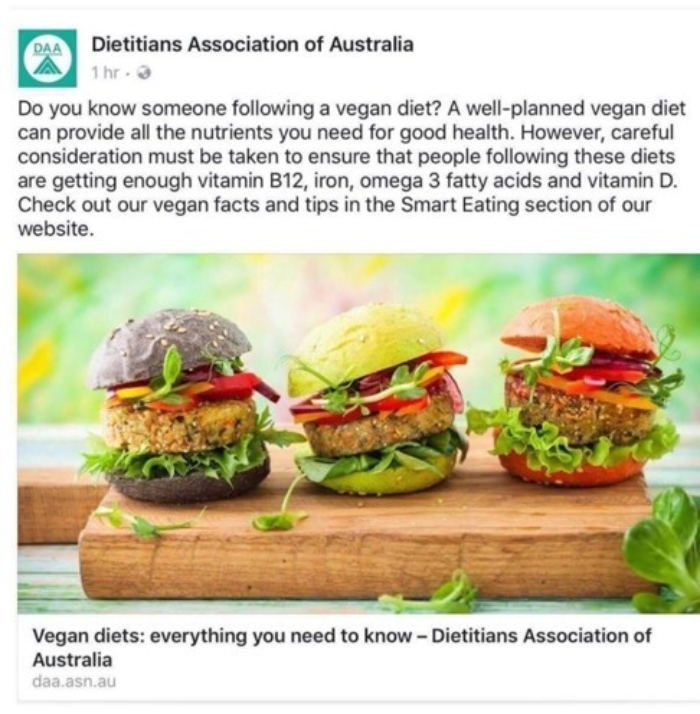
I have to ask … are dietitians in Australia aware that their parent body, the Dietitians Association of Australia, puts a stamp of approval on vegetarianism and veganism which has been shaped by Religious Ideology and their own corporate partnerships with the cereal industry, yet refuses to consider the health benefits of Low Carbohydrate Healthy Fat principles?
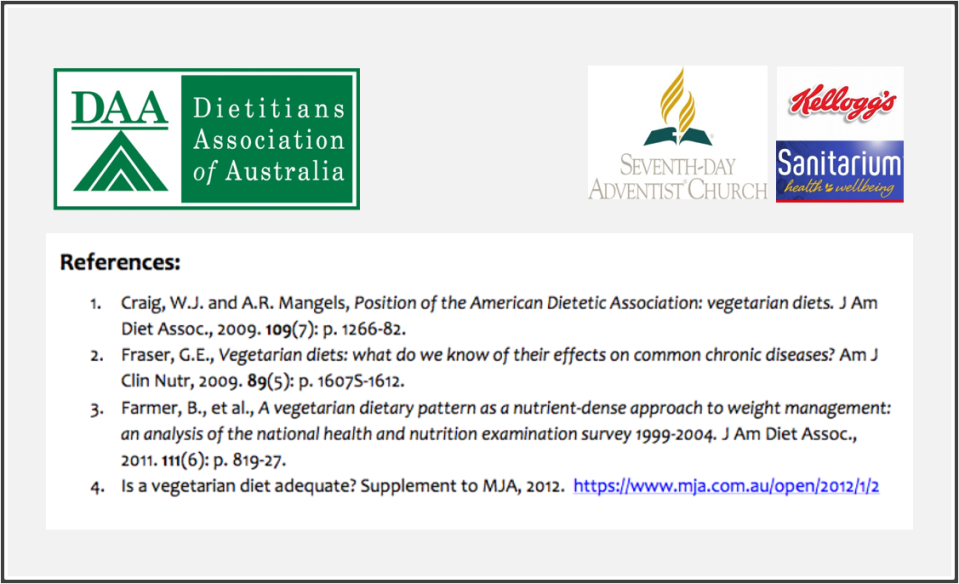
ALL the references used on the DAA Vegetarian Position statements (published in 2014 & updated 2017) are from Seventh-day Adventists and/or employees of Sanitarium and Kellogg's breakfast cereal company’s. The authors of the 4th reference - the Vegetarian Supplement in the Medical Journal of Australia were not only seventh-day Adventists (bar 1) but many of them also worked for either Sanitarium, the Sydney Adventist Hospital or at the Adventist Australasian Research Institute.
In fact, all research articles written in the Medical Journal of Australia supplement “Is a vegetarian diet adequate?” were sponsored by Sanitarium Health and Wellbeing company AND the Adventist Health Ministries.
My question is "who gains the most from the demonization of dietary fat and meat?" The breakfast cereal industry, soy industry, vegetable oil industry and the sugar industry... all legacies of the Temperance Movement in an attempt to stop us consuming alcohol and eating animal protein and fats!
After planting some ‘food for thought’ with you all, I will now discuss the intersection of the two arms of the Temperance Movement and the evolution of our ‘plant-based’ dietary guidelines.
There is no doubt that the influence began with the Seventh-day Adventist Church, but it really took off when the food industry got involved, too!
The Food Industry and the Evolution of the Plant-based dietary guidelines
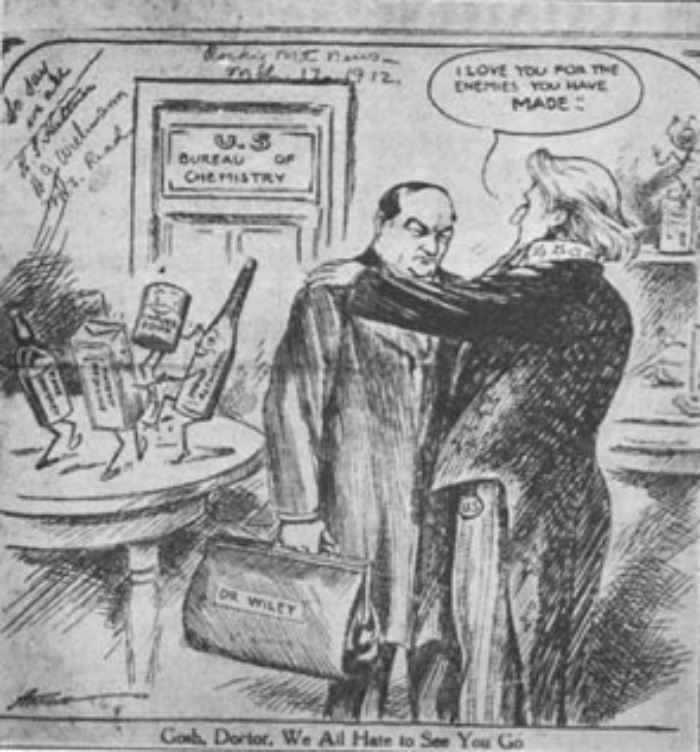
The food industry, and in particular Coca-Cola, had a long history of agitation and lobbying against regulation and policy. Even Harvey Washington Wiley, a doctor and a chemist who recognized early on the need to regulate the adulteration of food, couldn’t stop their influence despite years of lobbying to introduce the Pure Food and Drug Act in 1906.
By 1912 he resigned from the Chemistry Bureau because he felt he had been antagonized in the process of enforcement of the Pure Food and Drug Act and became increasingly frustrated by the fundamental principles of that Act that were continually paralyzed, or discredited, by industry lobbyists.
I guess not much has changed…
Harvey Wiley was far happier working at the Good Housekeeping Institute laboratories writing columns in Women’s Magazines to help women make an informed choice about what they fed their families.
Everything changed in 1942
The real turning point came about in 1942 when a group of food industries realised they could fund the newly established ‘nutrition’ science, "to develop and apply the science of nutrition for the improvement of the diet and health of the American people."
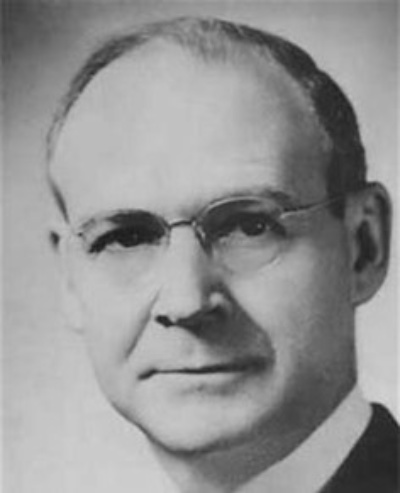
Charles Glen King, a research biochemist known for his isolation of vitamin C, was an active pioneer researcher in the young science of nutrition.
In 1942 he became the director of the newly formed Nutrition Foundation and made it the leading private supporter of nutrition research for the next 21 years. He was personally responsible for strengthening many nutrition departments in U.S. universities and successfully enlisted industry support in these efforts.

It also allowed provision of a patent policy - adopted to ensure research findings were to be made available to industry with full protection of public interest.
As Scientific Director and President of the Nutrition Foundation, Charles Glen King helped establish the Recommended Dietary Allowances and the Protein Advisory Group, the International Union of Nutritional Sciences (IUNS) and grant programs in nutrition and biochemistry in the National Institutes of Health.
He was acknowledged as having a unique ability to identify young scientists at the beginning of their career and provide them with support through the Nutrition Foundation for their early research.
Enter Dr Frederick Stare...
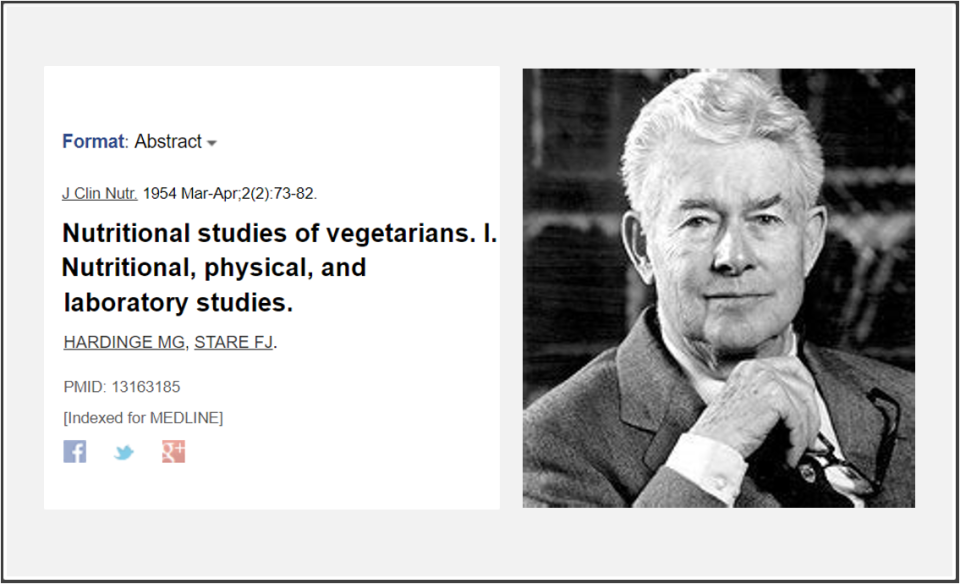
Enter Dr Frederick Stare as chairman of the newly formed nutrition department at Harvard - the first of its kind in any medical or health centre worldwide!
Remember I mentioned Mervyn Hardinge earlier? He did his doctoral dissertation in the 1950’s under Frederick Stare, when vegetarianism/vegan diets were first proven for health.
Walter Willett wrote about their study and the alliance between the two university's - “In more than 300 papers of health-related research studies among Seventh-day Adventists, it is notable that the first 3 citations were co-authored by Drs Mervyn Hardinge and Fred Stare… Thus, from the beginning of the Adventist Health Studies, an important interaction has existed between the Department of Nutrition at Harvard School of Public Health and Loma Linda Adventist University."
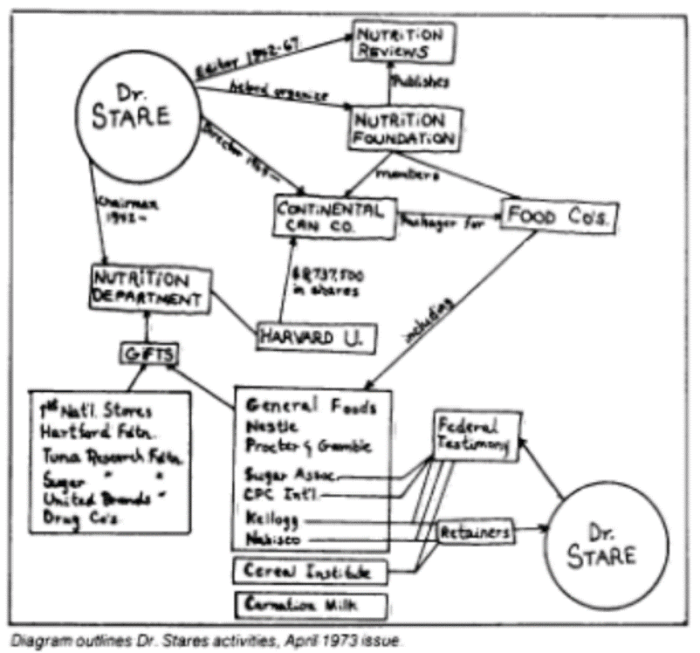
Let’s take a step back... This diagram was published in Present Illness, a Harvard Alumni Bulletin in 1974. But I have made a clearer version below.
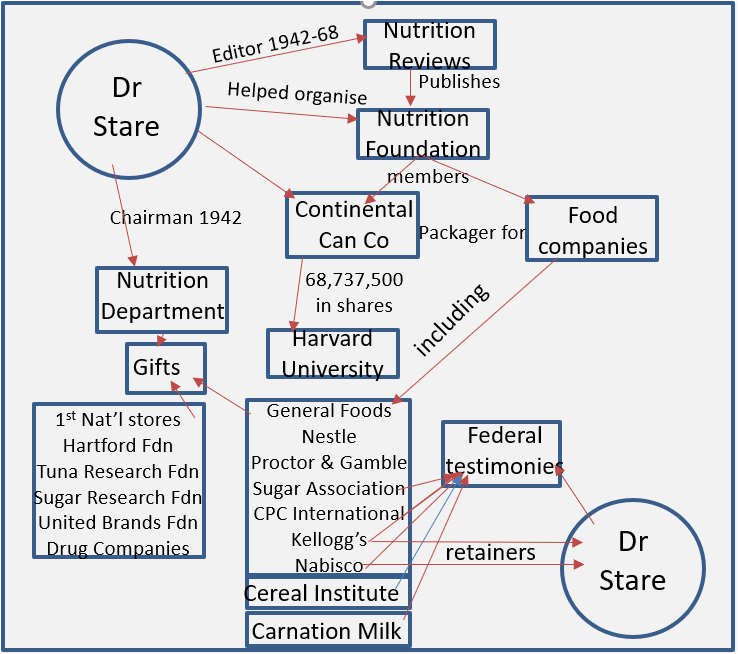
… well, sort of ;-)
In his autobiography, Adventures in Nutrition, Fred Stare states that he was the director of the Continental Canning Company owned by his father and that Harvard University held 68,737,500 shares in the company. He wrote that in 1960 he obtained a grant of $1,026,000 from General Foods for the "expansion of the School’s Nutrition Research Laboratories" and over the 44-year period as a nutritionist he raised a total of nearly $30,000,000
The Nutrition Foundation at Harvard was founded from the investment of 5 food industries, including $2,000,000 from Kellogg's.
Fred Stare was the first editor of the Foundations' publication Nutrition Reviews.
John Hess writes in his article Harvard's Sugar-Pushing Nutritionist "As an adviser to the US government, Stare rejected the idea that 'the American diet' was harmful; stating for example - that Coca-Cola was "a healthy between-meals snack" and that eating even great amounts of sugar would not cause health problems.
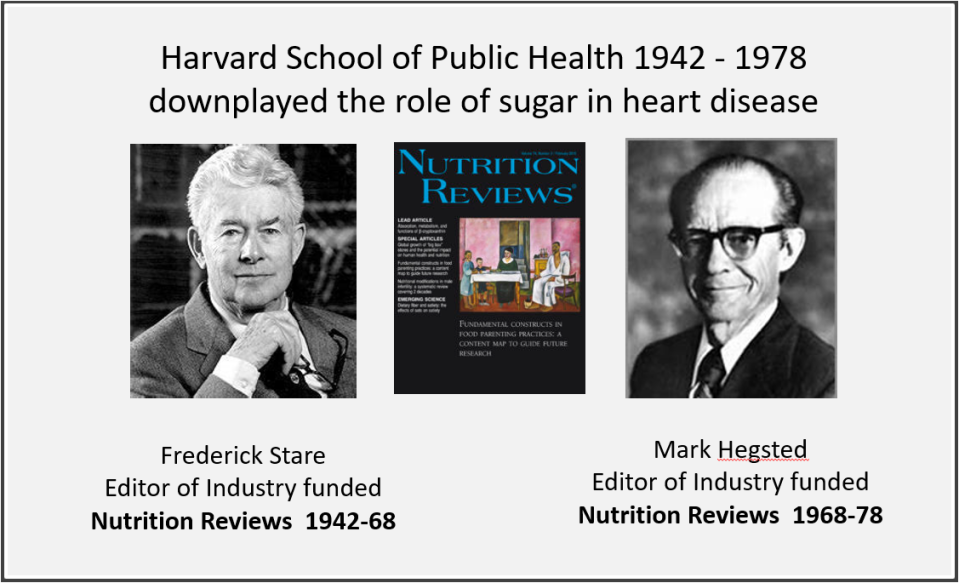
In 2007 Dr. Cristin Kearns discovered papers on how the sugar industry funded seminal research downplaying the role of sugar in heart disease. She said “Stare and Hegsted tore apart studies that implicated sugar and concluded that there was only one dietary modification needed - changing fat and cholesterol intake that could prevent coronary heart disease."
In 1977, the New York Times reported that Mark Hegsted "helped draft Dietary Goals for the United States,” a report issued by the Senate after it held hearings on the national diet. The report, also known as the McGovern report after George McGovern, the South Dakota Democrat who was chairman of the Senate committee, recommended a lighter diet rich in fruits, grains and vegetables as a way to reduce the risk of diabetes, heart attacks and other chronic diseases. It is considered a precursor of the more detailed “Dietary Guidelines for Americans,” a federal review of nutrition and health that is published every five years."
"From 1978 to 1982, Dr. Hegsted was administrator of the human nutrition unit at the Department of Agriculture and opened the department’s Human Nutrition Center."
Mark Hegsted was the second editor of the Nutrition Foundations' publication Nutrition Reviews.
Alex Malaspina and the International Life Sciences Institute

During the aftermath of the McGovern report and introduction of our low-fat dietary guidelines Alex Malaspina (then Vice-President of Coca-Cola) founded the International Life Sciences Institute (ILSI) in 1978.
The International Life Sciences Institute (ILSI) took over the publication of Nutrition Reviews in 1982 and today it is still ranked in the top 10 nutrition journals in the world for doctors, dietitians and other health professionals. The ILSI-Nutrition Foundation was created in 1985 as a merger between the ILSI and the Nutrition Foundation Inc.
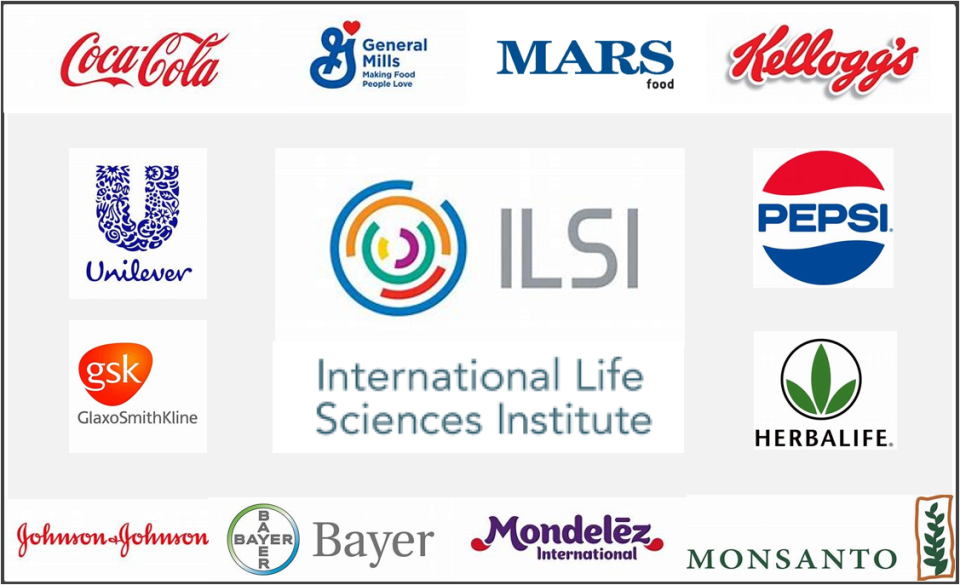
ILSI claims to be a non-profit science organization headquartered in Washington, DC. Others see it as a front lobby group for industry that wields great influence on global food and health policy.
Its membership consists of more than 400 of 'the world’s leading manufacturers of food and food ingredients, chemicals, pharmaceuticals and other consumer products', and includes Coca-Cola, Kellogg’s, Monsanto, Nestlé, Procter & Gamble, Pfizer and Sanofi-Aventis group.
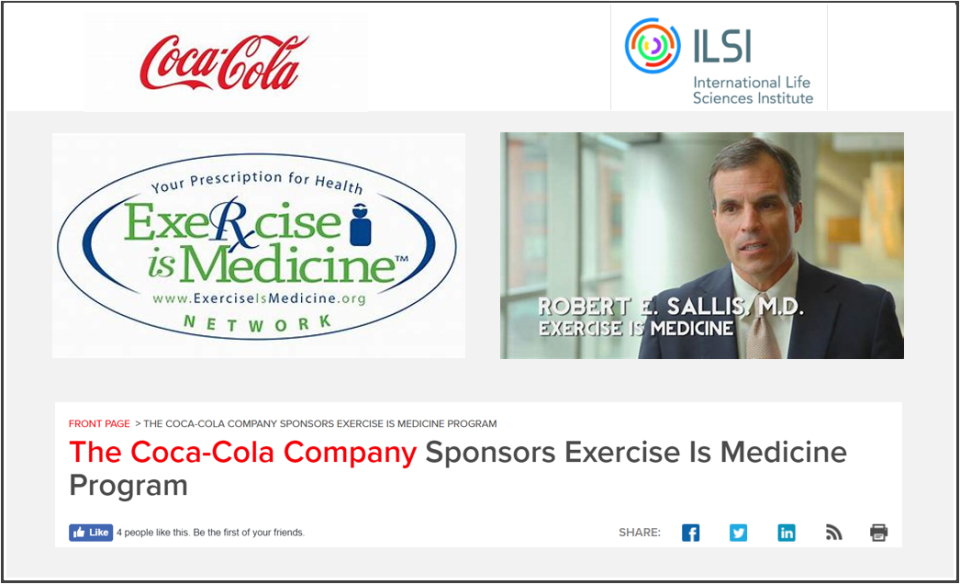
I have already spoken about Exercise is Medicine™ but I would just like to share a couple more points about Lifestyle Medicine before leaving you to consider all that I have talked about.
Lifestyle Medicine
Just a reminder that Adventist - John H. Kelly Jr., MD founded the Christian Association of Lifestyle Medicine at Loma Linda University in 2003 which became the American College of Lifestyle Medicine (ACLM) in 2004.
During a 2007 interview with a group of doctors involved in the fledgling ACLM, the New York Times journalist Kate Murphy noted; some doctors say the movement suffers from fringe elements that advocate unproven strategies like strict vegan diets and daily saunas.
“Lifestyle medicine has to be scientifically based to distinguish it from all the quackery out there,” said David R. Brown, senior behavioral scientist in the division of nutrition and physical activity at the disease control center.
Dr. Kelly agreed. “We need to have a certification process in place with rigorous, evidence-based standards,” he said.
I won’t go into any more of my research into the Seventh-day Adventists involved here, nor the food industry alliances (both Adventist and non-Adventist) with the Lifestyle Medicine movement, but just know that it is extensive. There is very little acknowledgment in the promotion of Lifestyle Medicine conferences, nor in the accreditation/board certification courses on offer, about the involvement of the Church nor members of the Church who have a potential bias with a pro-cereal/grain anti-meat message.
To be honest, Lifestyle Medicine is exactly what we need to turn around the tsunami of lifestyle related disease. There is no doubt a like-minded community of people to support us make, and sustain lifestyle changes, will improve health outcomes. I also like that the Lifestyle Medicine movement has a big focus on prevention of disease, and management without drugs as the first line of defense.
My concern are the following 2 statements...
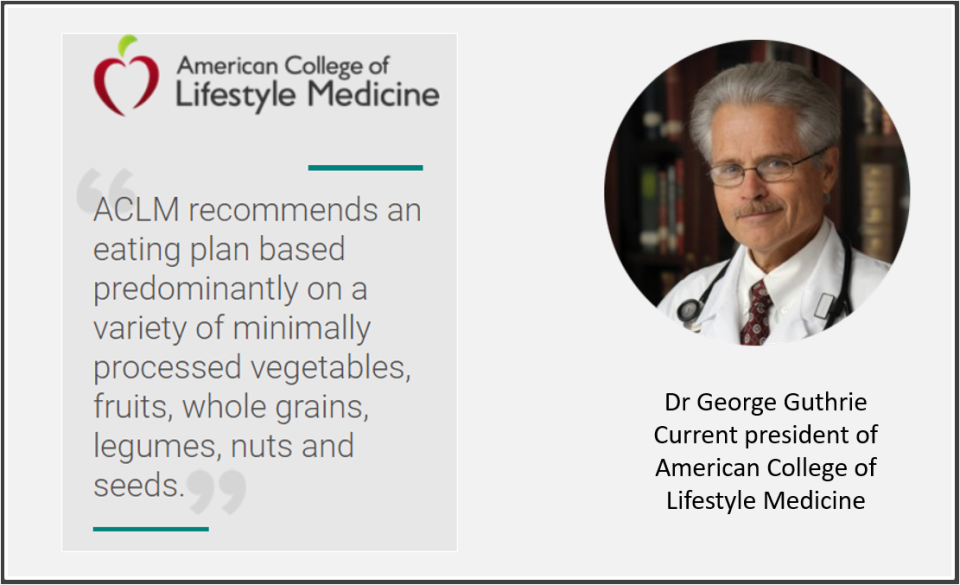
Dr George Guthrie is a Seventh-day Adventist. He is the current president of the American College of Lifestyle Medicine and recently announced their dietary North Star stating; “For the treatment, reversal and prevention of lifestyle-related chronic disease, the ACLM recommends an eating plan based predominantly on a variety of minimally processed vegetables, fruits, whole grains, legumes, nuts and seeds” ... which sounds very much like the Garden of Eden diet prophesied by Ellen G White.
In the same article Dr George Guthrie went on to say that "there have been numerous epidemiological studies through the years, both prospective and cross sectional - as well as carefully controlled animal studies, showing that increasing animal protein and fats leads to an increase in disease," claiming "We have a growing stream of evidence that animal protein may actually cause or worsen health problems.”
*Increased heart disease mortality
*Worsening blood sugar control in diabetes
*Increased risk of kidney stones
*Increased loss of calcium from bones
*Increased cancer risk
The article also acknowledged "that time and space do not allow a full review of this evidence. But we can say with a reasonable amount of certainty that eating animal protein as the primary source of protein is detrimental to health."
We know where this is heading ...
In Conclusion
It is a challenging topic, but I truly believe people have the right to know the influences on our dietary guidelines. Influences which are shaping them into vegetarian/vegan Rule-Books. It is about choice. It is about health, yours and mine.
The Legacy of the Temperance Movement … in an attempt to stop us consuming alcohol and meat, have we allowed the processed food industry to create our food supply? Are we simply going to sit back and watch Vested Interests and Ideology (with the backing of the cereal industry and coca-cola) to dictate health policy and continue to shape our dietary and health guidelines?
Time to separate Church and Plate.
Belinda Fettke
